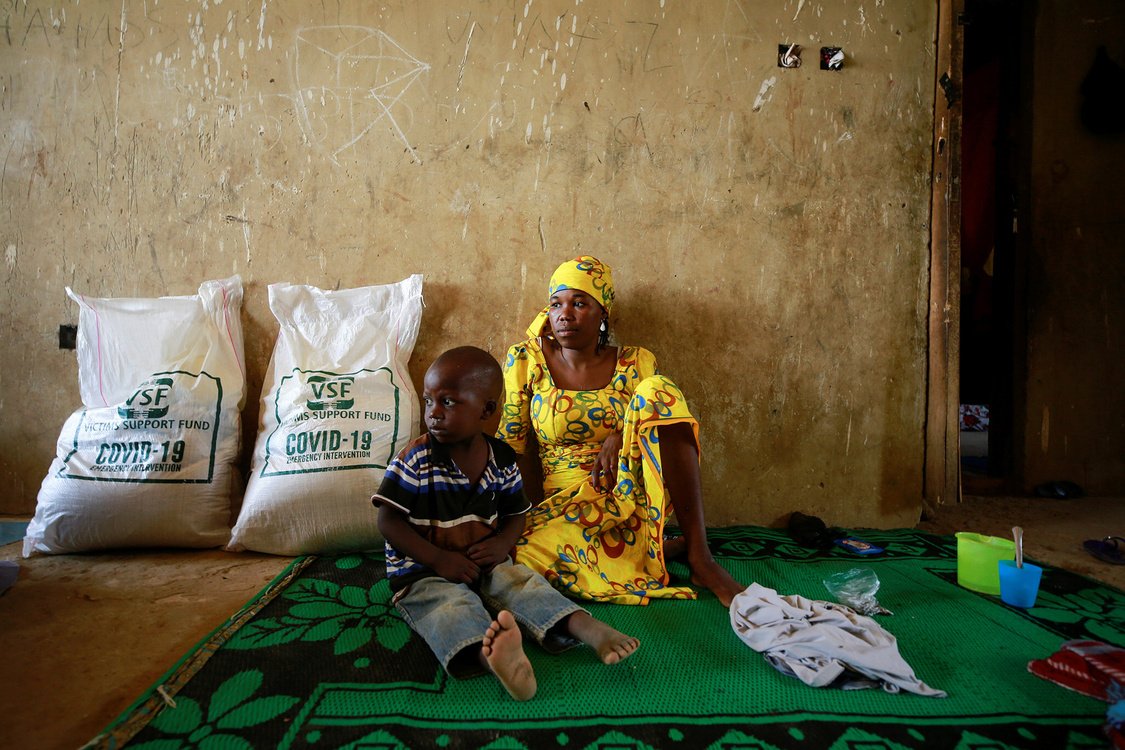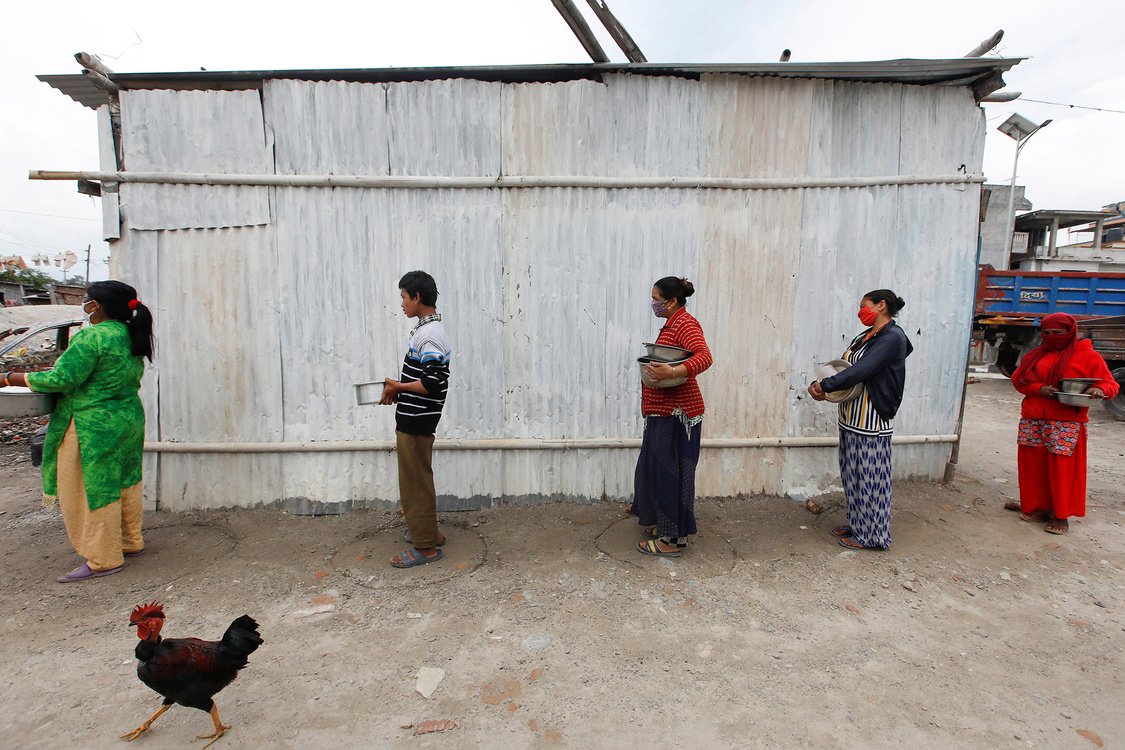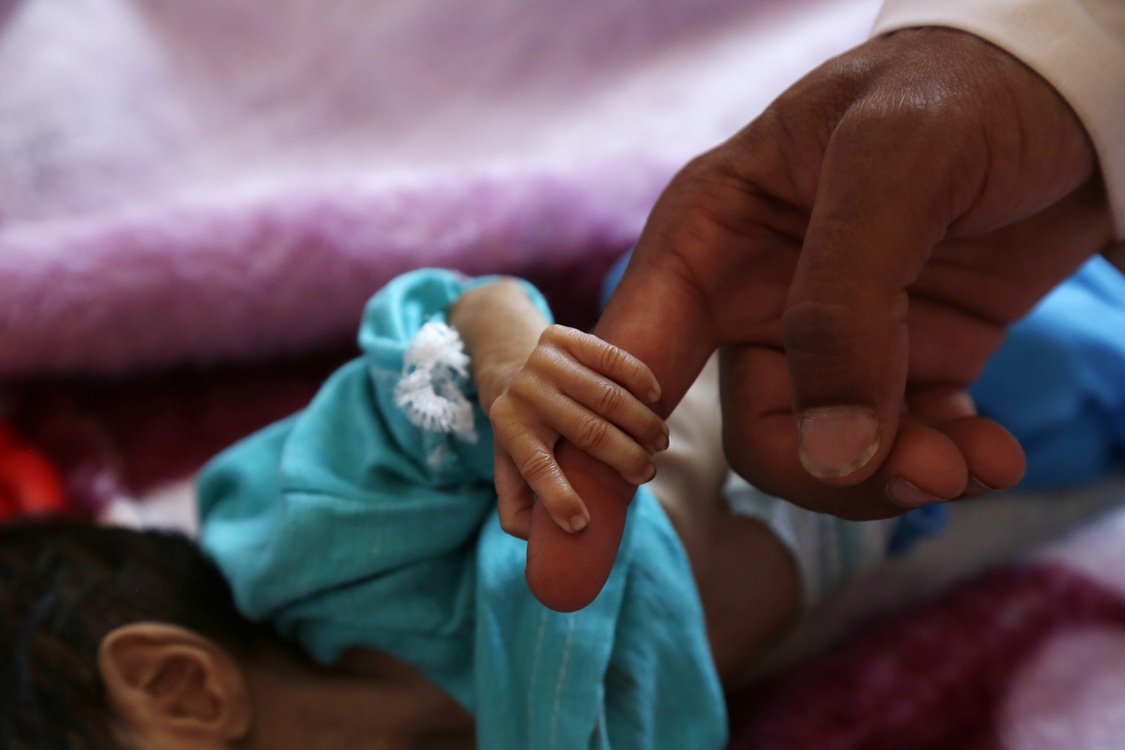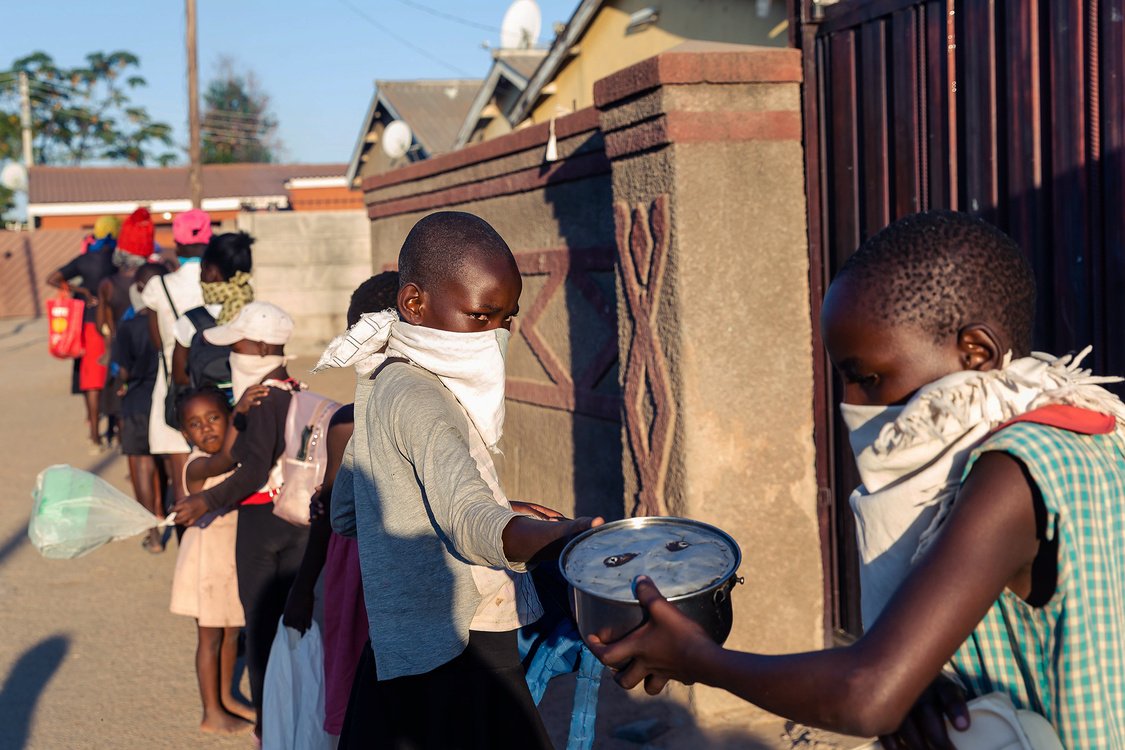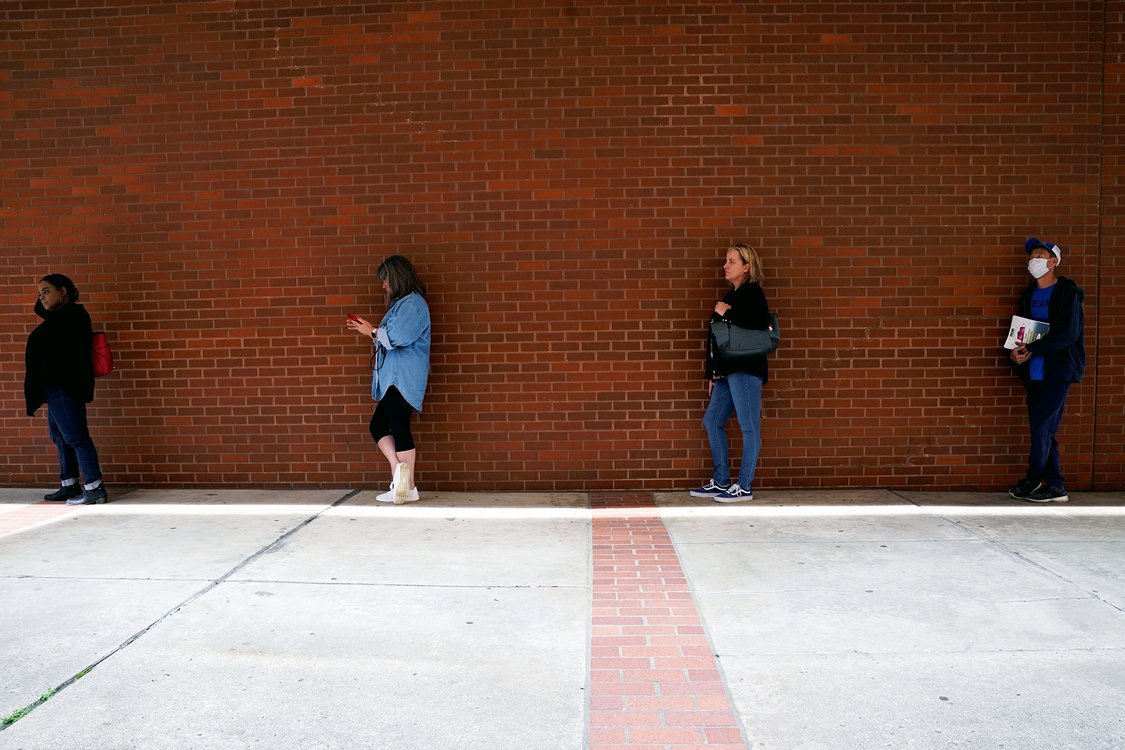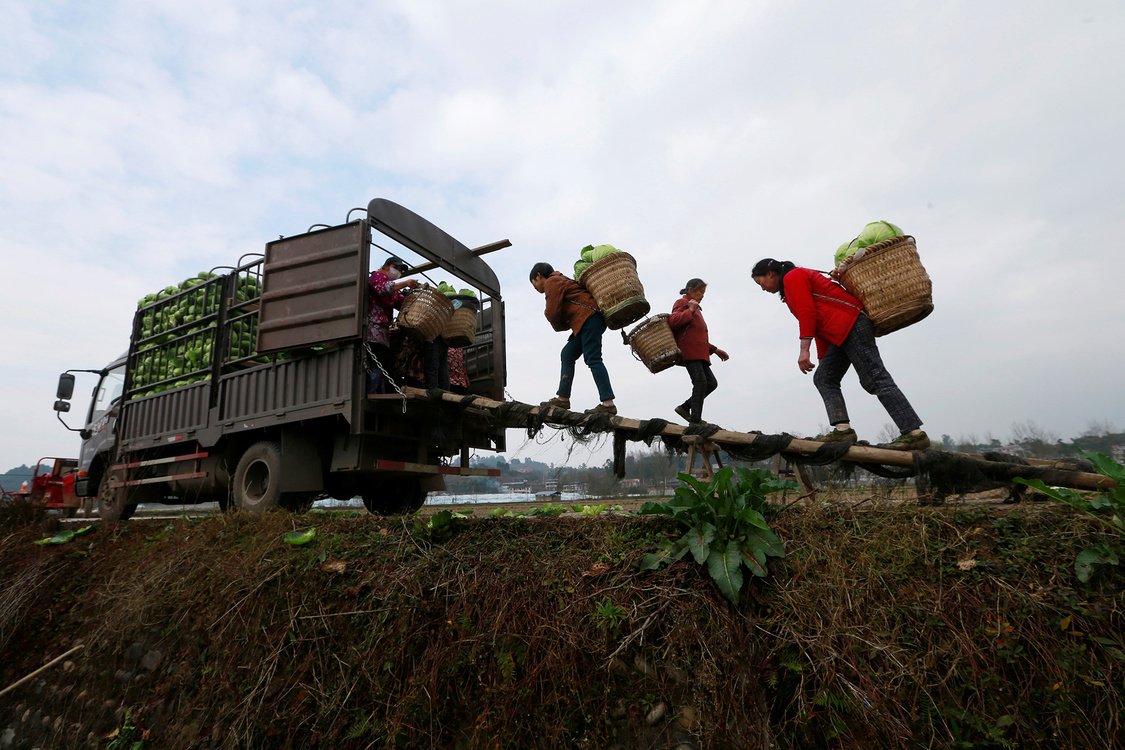Rising Hunger: Facing a Food-Insecure World
Global food insecurity has surged amid the coronavirus pandemic, threatening to worsen humanitarian crises and spur further mass migration.
In 2019, an estimated 135 million people faced life-threatening food insecurity, according to the World Food Program (WFP), the UN food assistance agency. Now, that number is projected to nearly double due to the coronavirus pandemic, with food emergencies afflicting countries that have not required interventions in the past.
Pandemic restrictions have made it more difficult to access food, and economic downturns around the globe could mean long-lasting inability to afford food for hundreds of millions of people. The hunger crisis will have dramatic implications in many areas. It threatens to unravel decades of progress in global health: poor diets are the leading contributor [PDF] to the world’s disease burden, including childhood conditions such as stunting and chronic illnesses caused in part by obesity. Hunger, both acute and chronic, can also impede children’s education and career prospects. In extreme cases, it can roil the political landscape. Surging food prices helped fuel recent protests in Lebanon, while shortages led to demonstrations in Chile earlier this year. Many without access to food flee home in search of it; the WFP estimates that for every 1 percent increase in hunger, there is a 2 percent increase in migration.

At the same time, the pandemic has mobilized international institutions, governments, and aid organizations to take action. The coronavirus has laid bare widening gaps in food access and affordability, two areas where experts are focusing their efforts to make food systems more resilient.
An Enduring Challenge
Global hunger had been rising for years before the pandemic. Last year, almost one-tenth of the world’s population was exposed to severe food insecurity, the most extreme level of insecurity as measured by the UN Food and Agriculture Organization (FAO). This means a person has run out of food or at some point gone an entire day without eating. Asia has the largest population of undernourished people, at more than 380 million, followed by Africa and Latin America.
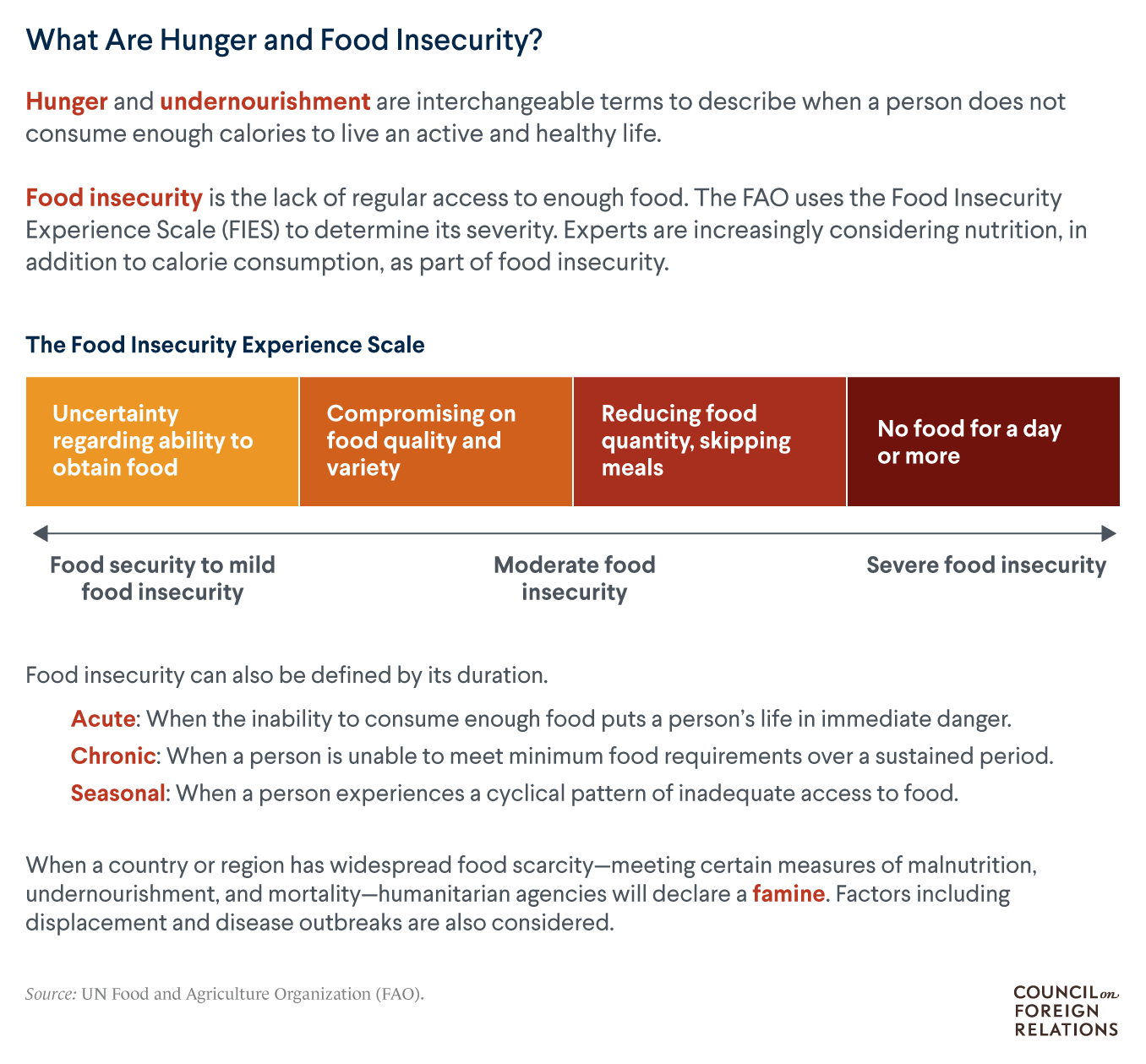
As with poverty, often mutually reinforcing factors drive food insecurity. These include conflict, uneven food distribution, poor governance, economic challenges, and population displacement. Environmental issues—such as extreme weather events, water scarcity, and pollution—threaten food production, and climate change is adding a new level of danger.
Food security is not just about consuming enough calories but also adequate nutrition. This means taking in macronutrients—carbohydrates, fats, and proteins—as well as micronutrients, which are vitamins and minerals. Such diets are far out of reach for people living on less than $1.90 per day at 2011 international prices, which aid officials define as the threshold for extreme poverty.
“If you’re living in poverty, you might have enough to purchase rice for the day, but it’s nowhere near enough for you to purchase a meal that provides all the nutrients necessary to meet your dietary needs,” says Caitlin Welsh, director of the Global Food Security Program at the Center for Strategic and International Studies. Roughly 690 million people are undernourished globally, but more than three billion [PDF] can’t access the cheapest healthy diets. Additionally, obesity is of growing concern in low- and high-income countries alike, as families turn to cheap foods that are high in fat, salt, and sugar.
Hunger in a Well-Stocked World
Despite the pandemic, the global food supply has remained relatively strong, with the production of major staples such as rice and wheat staying above average in 2020. But lockdowns and other containment measures have driven up unemployment, disrupted food supply chains, and cut off the flow of remittances around the globe. Hundreds of millions of people have lost their jobs because of the pandemic, making food—particularly nutritious food—unaffordable for many even where it is available. Ultimately, the health crisis could force up to 132 million more people globally to become undernourished this year, UN experts say, due to inequalities in food access.
The countries at greatest risk of worsening food crises are those that are heavily dependent on imports; lack a diversity of food suppliers; are landlocked; or were already facing shocks due to conflict, climate events, or economic troubles. Low-income countries, which typically have more labor-intensive food supply chains involving planting or harvesting, have seen significant disruptions.
Though some countries imposed export restrictions, a move meant to cushion domestic food supplies, food export bans have been rare compared to during the 2008 global financial crisis. Nations, including those in the Group of Twenty (G20), have pledged to keep trade open.
Wealthy nations, too, have been seriously challenged, despite having more capital-intensive, mechanized supply chains. Many of these countries rely on foreign agricultural workers to harvest delicate crops by hand, but pandemic-related travel restrictions have prevented or hindered the movement of migrant laborers.

Income losses have devastated urban communities in particular. “When we think of hunger, we often think of rural communities and subsistence farmers—places and groups disproportionately hit by food insecurity in the past,” says Chase Sova, senior director of public policy and research at World Food Program USA. “But COVID-19 is an altogether new threat, affecting the urban poor in great numbers.”
Women and children are disproportionately affected by hunger. The health crisis is intensifying gender inequalities [PDF], as women are more likely to skip meals or eat smaller portions and face more restrictions on food production. Roughly ten thousand additional children under five years old are projected to die per month in 2020 due to pandemic-linked nutritional issues, potentially undoing decades of progress toward reducing child deaths globally. An estimated 5.2 million children under age five died in 2019, with nutritional factors contributing to roughly 45 percent of deaths in this age range. Insecurity is also higher among racial and ethnic minority groups, highlighting long-standing economic disparities.
Regions Under New Strains
Asia and the Pacific
Since first emerging in the region, the novel coronavirus has escalated food security risks across Asia and the Pacific. Pandemic-related factors have throttled every stage of the food supply chain. Some countries—including Cambodia and Vietnam [PDF]—have restricted food exports, and food has piled up at Philippine ports.
A nationwide lockdown rocked India’s already shaky food infrastructure, warping supply chains and raising food prices. A pandemic-related lack of migrant laborers hamstrung India’s food production, further limiting supplies in one of the world’s hungriest countries. Moreover, the poultry industry took a massive hit following unsubstantiated rumors that the coronavirus can be transmitted through chicken.
In Afghanistan, the pandemic’s economic fallout has worsened already rampant poverty and food insecurity, creating a humanitarian challenge aid workers say they have not seen in nearly two decades. Life-threatening malnutrition in children under five spiked 13 percent between January and May, and movement restrictions mean fewer malnourished children are receiving medical care.

Middle East and North Africa
Generally water-stressed and reliant on food imports, the region is naturally vulnerable to food insecurity. Pandemic-related drops in oil prices, remittances, and tourism are expected to increase poverty and make it harder for people to access food.
The wealthy states of Saudi Arabia and the United Arab Emirates have so far avoided food shortages. But conflict-wracked Yemen, where food programs have been cut and border restrictions have impeded aid deliveries, is on the verge of famine. Nearly half of children under five could be malnourished by the end of 2020.
In Lebanon, the pandemic has aggravated economic issues, including rising import costs and currency depreciation, that make it difficult to procure agricultural and food products. The country faced a possible food crisis even before August explosions ravaged Beirut’s port, destroying the country’s primary grain silos and further raising concerns about food security.

Sub-Saharan Africa
The number of undernourished people is growing faster on the African continent than anywhere else in the world. Approximately 22 percent of people in the sub-Saharan region were undernourished in 2019, according to the FAO, and that proportion is now projected to jump to nearly 30 percent by 2030.
Countries that were already in the midst of crises now face even more dire situations. In Zimbabwe—plagued by drought and decades of economic mismanagement—the number of food-insecure people could rise to 60 percent of the population by the end of 2020. In Sudan, which was rocked by massive protests in 2019 as it neared economic collapse, pandemic restrictions have put more people out of work as prices for basic goods have skyrocketed. Even in countries with relatively strong economies, such as Nigeria, shocks to household incomes are putting food out of reach for more and more families.
Ethiopia, Kenya, and other countries in East Africa and elsewhere were suffering their worst locust swarms in decades before the pandemic hit. The insect invasions, which experts have linked to climate change, have depleted large swaths of vegetation and led to the deaths of livestock; amid pandemic closures, the delivery of pesticides has slowed and in some cases halted altogether.

Latin America and the Caribbean
The pandemic could unravel fifteen years of hunger reduction in the region, as unemployment and rising food prices have left millions of people unable to buy sufficient or nutritious food. In a region where much of the economic activity is informal, pandemic lockdowns hit incomes hard. Together, Latin America and the Caribbean are projected to see a 269 percent jump [PDF] in the number of people who are acutely food insecure in 2020, as compared to before the coronavirus.
The coronavirus is also compounding the existing crisis in Venezuela, where one-third of people were hungry pre-pandemic. Millions of people who fled Venezuela have lost their jobs in Colombia, Ecuador, and Peru, and are now among the Latin Americans most at risk of starvation.
Haiti, the region’s poorest country, was already dependent on food imports and now faces rising hunger. The pandemic has forced Haiti’s schools, where many children get meals, to close; it has also caused a drop in critical remittances. Meanwhile, debt-saddled Argentina has seen a nearly 40 percent increase in people who depend on the government for a daily meal. Mexico City food kitchens have likewise begun serving roughly 20 percent more meals.
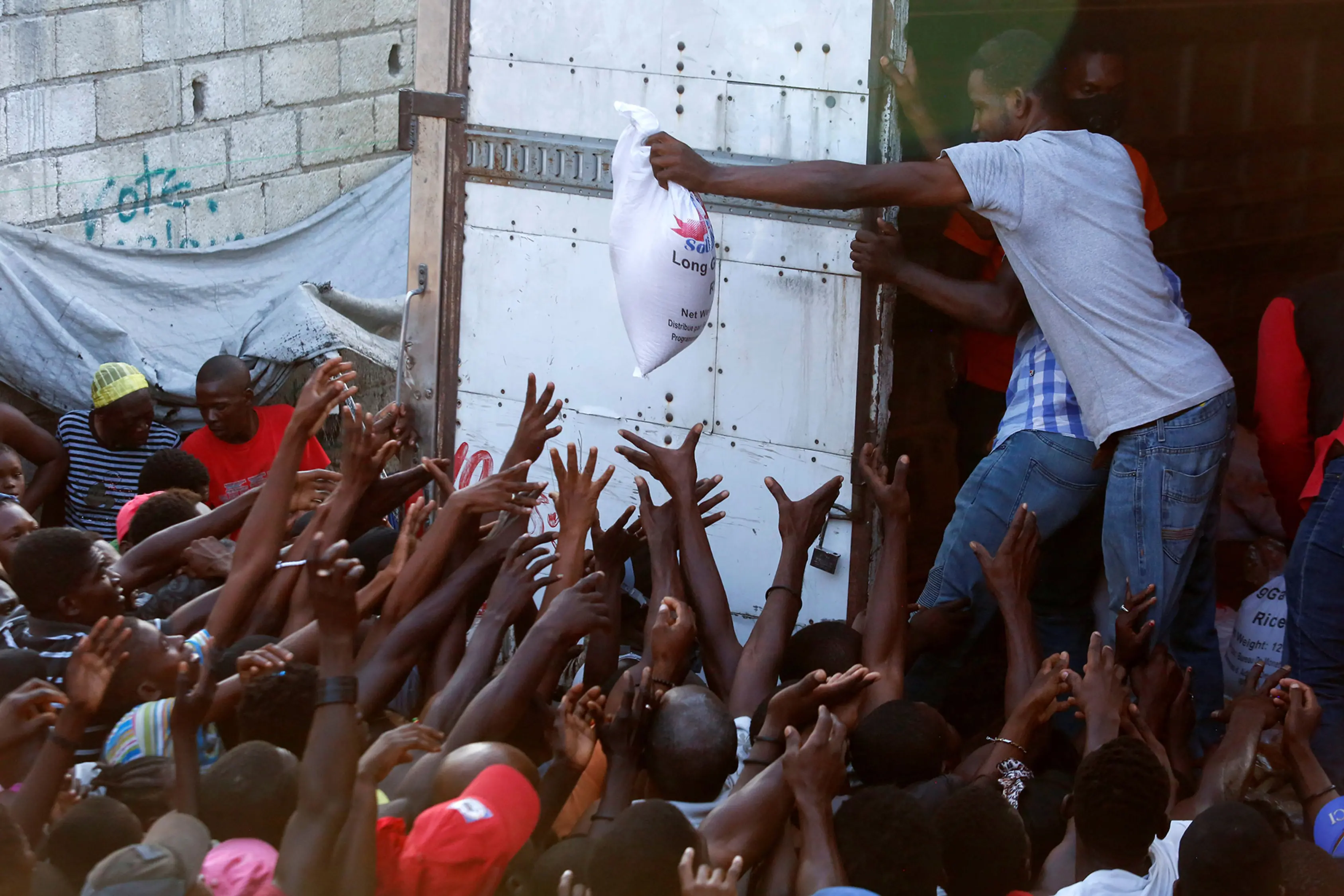
Europe
The pandemic has created a recession worse than the 2008 financial crisis, which caused 13.5 million European households to become food insecure. More than 80 percent of the European Food Banks Federation’s member countries saw a rise in demand for emergency aid by late March, indicating both food shortages and unequal food distribution. Vulnerable groups include refugees in Turkey, nearly two-thirds of whom have struggled to access food during the pandemic. Meanwhile, other Europeans, including in Italy, have rushed to stockpile food.
The pandemic has hindered food production, in part because agriculture in countries such as Germany relies on foreign laborers who are subject to travel restrictions. Coronavirus outbreaks have also shuttered meat factories across the continent. Prince Charles urged students and furloughed workers to help harvest food in the United Kingdom, though the country’s Brexit-related stockpiling of food has helped it meet a rise in demand.
United States
U.S. food insecurity has swelled amid the pandemic, which triggered record unemployment, raised grocery prices, and shrank individuals’ purchasing power. As of late summer, almost one in eight households lacked enough to eat, and food insecurity is far higher among Black and Hispanic communities. Demand at food banks has surged to unprecedented levels, with almost half of beneficiaries receiving food assistance for the first time.
Still, unlike during previous eras of hunger, the United States has an abundance of food. Some farmers even destroyed their products after restaurant closures upended supply chains and coronavirus outbreaks forced meat plants to suspend operations.
A Path Forward
Even if economies recover in 2021, experts say severe food insecurity will persist, pressing governments, multilateral organizations, and aid groups to rethink the world’s food systems. This could expand the number of short-term interventions that provide more immediate relief from food insecurity during the pandemic, as well as lead to long-term reforms that address persistent drivers of hunger and streamline global supply chains.
“In a way, it will help,” says Johan Swinnen, director general of the International Food Policy Research Institute, a nonprofit organization focused on reducing poverty and ending hunger and malnutrition. “There’s a lot of talk now about building back better.”
Short term. Experts including Sova and Welsh say that successful interventions have built on countries’ existing social safety nets. Such tactics include assistance for farmers, unemployment benefits, and public food programs. “Food banks are meant to be the emergency stopgap. But programs like [the U.S. Supplemental Nutrition Assistance Program (SNAP) and Special Supplemental Nutrition Program for Women, Infants, and Children (WIC)] are much more sustainable and have better impacts on local economies, and on household food security,” Welsh says. She adds that it is important for governments to reduce the transaction costs of remittances, which would give people more purchasing power.
Countries can also work to ease supply chain disruptions. Experts point to China’s so-called green lanes as a template for exempting food-related activities and workers from lockdowns. Early in the pandemic, the Gulf Cooperation Council enacted a similar joint food supply network, and, in a separate effort, seven countries made a cross-regional pact to maintain open trade and supply chains. Avoiding food export restrictions is needed to help prevent food prices and insecurity from rising further.
In some countries, such as Yemen and Syria, underlying crises make international aid critical to address pandemic-related food insecurity. The WFP alone needs $13 billion to administer food programs this year. But this may be a tall ask for donor countries facing pandemic-induced economic recessions and shifting investments toward health systems.
Long term. Food security experts also urge more transformative policies and initiatives. Progress toward global poverty reduction has allowed some households to spend smaller portions of their incomes on food and decrease their vulnerability to food price shocks, though the pandemic appears to be undoing some of those gains. The agricultural sector can take steps to fortify supply chains against future disruptions, particularly through diversification. This could mean food companies source raw food materials from a diverse group of farms across multiple regions, or individual farmers expand their variety of crops and livestock.
As the need for climate action takes on increasing urgency, food and environmental experts have stressed the importance of transforming food systems to reduce greenhouse gas emissions. These efforts include reducing food waste and emphasizing plant-based or nutrient-dense diets. Amid the pandemic lockdown, farmers in India used social media to redirect their produce directly to consumers. On a larger scale, China launched its “clean plate” campaign, aimed at pressuring citizens not to throw away food. Beijing is also implementing a national nutrition plan. Some countries, including India, Mexico, South Africa, and the United Kingdom, have taxed or banned sugary foods and drinks.
One important new multinational initiative is the COVID-19 Food Coalition, proposed by Italy and led by the FAO, which has brought together dozens of countries to tackle the pandemic’s long-term impacts on food systems and agriculture. “What is clearly changing now is the thinking about how to make these systems more resilient,” Swinnen says.
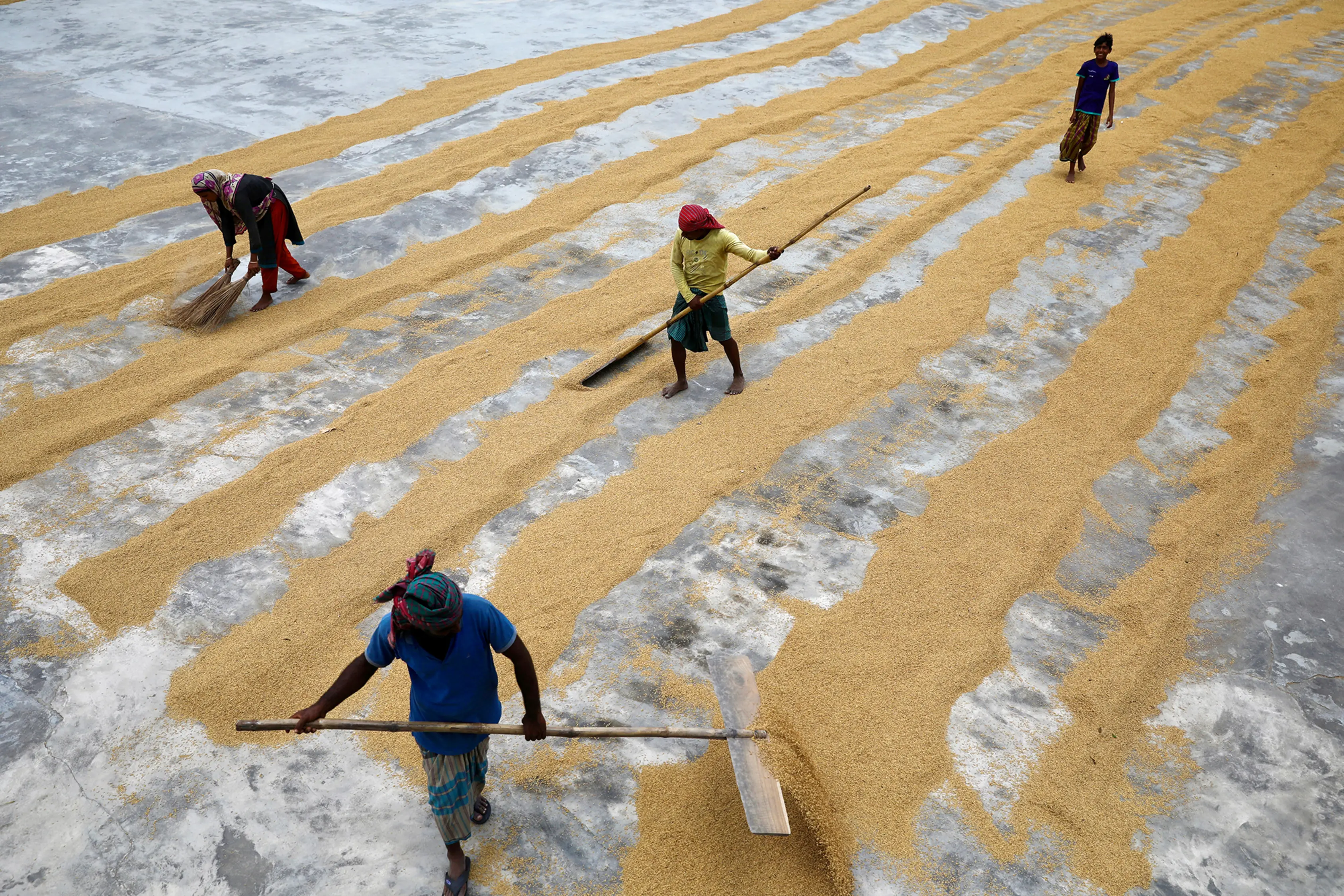
Additional Resources
- To learn more and help provide food for the world’s undernourished, visit Action Against Hunger, UNICEF, and the World Food Program.
- Johan Swinnen and John McDermott explain the pandemic’s impact on food security in their new book, COVID-19 and Global Food Security.
- For CFR’s Think Global Health site, Hannah Todd and Nicky Joseph argue for expanded safety nets worldwide to ensure children are fed and cared for.
- The New York Times illustrates food insecurity in the United States and explains how pandemic-related hunger will kill.
- CFR’s Michelle Gavin evaluates the politics of food in Africa amid the coronavirus pandemic.
- For Foreign Affairs, David M. Beasley discusses the looming hunger pandemic.





